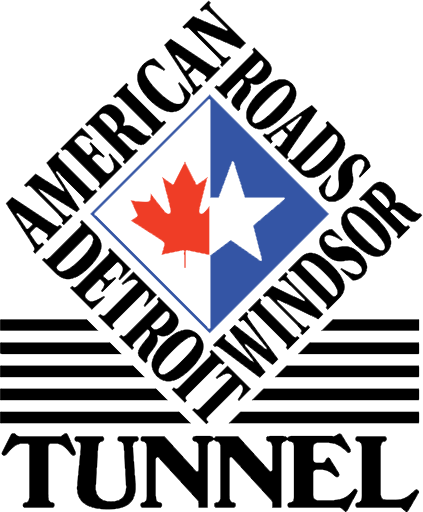Frequently Asked Questions (FAQ)
Welcome to our Frequently Asked Questions section, where you’ll find answers to common inquiries about using the Detroit Windsor Tunnel. As the world’s only underwater international vehicle border crossing, we’re committed to making your journey between Detroit and Windsor as smooth as possible. Below you’ll find important information about toll rates, payment methods, vehicle requirements, and operational procedures. Whether you’re a first-time user or regular commuter, these FAQs will help you plan your crossing efficiently.
TOLL & PAYMENT
Our toll rates vary based on vehicle type and direction of travel. View our complete toll rate schedule. Remember, Detroit-side payments must be in USD, and Windsor-side payments in CAD.
Currently, we only accept our proprietary Nexpress® program and direct payment methods. E-ZPass and other regional toll programs are not accepted.
ACCOUNTS & PROGRAMS
Anyone can open an account in either USD or CAD. There are no residency requirements. Sign up online or visit our customer service center.
No, these are separate programs that operate independently. You'll need to choose which payment method works best for your travel needs.
No, we never communicate via text message about toll payments. We do not use video tolling. If you receive such a message, it is fraudulent.
VEHICLE RESTRICTIONS & REQUIREMENTS
U.S. Customs and Border Protection CBP - 313.393.3973 ext. 327 U.S. Customs and Border Protection | U.S. Customs and Border Protection
Canada Border Services Agency CBSA - 800.461.9999 Canada Border Services Agency
For additional border crossing information or questions about documentation requirements, please visit the official websites of U.S. Customs and Border Protection or the Canada Border Services Agency.
Remember: Requirements and regulations may change. Always check the latest requirements before traveling.
The following vehicles and individuals are prohibited from entering the Tunnel:
- - Scooters, bicycles, and motorcycles (including all 2- and 3-wheeled vehicles)
- - Vehicles transporting hazardous materials or radioactive substances
- - Pedestrians (walking is not permitted)
Commercial trucks are permitted subject to the following restrictions:
- - Max height: 12’-8” (3.8 meters)
- - Max width: 8’-6”
- - Max weight: 144,000 lbs (65,317 kg)
The Tunnel accommodates tandem trailers of 45’ and 48’, 5- and 6-axle flatbeds with lift axles, and “B” tandem trailers with sliders.
All commercial trucks displaying hazardous material placards are strictly prohibited.
Vehicle Requirements: • Maximum height: 12'8" (3.8 meters) • Maximum width: 8'6" (2.6 meters) • 30° curve in pillar section
The tunnel accommodates: • "A" Trains • "B" Trains • 45', 48', 5 and 6 axle flatbeds with lift axles • 45' and 48' trailers with 2 and 4 axle sliders
OPERATIONS & ACCESS
The Tunnel is open 24 hours a day, 7 days a week, except for:
- - Detroit Free Press Marathon: Closed one day in October, approx. 6:30 AM – 10:30 AM
- - Annual First Responders Joint Exercise: Date/time announced annually (typically 7:00 AM – 10:00 AM)
- - Planned Maintenance: Tunnel remains open with traffic management in place.
Yes, we maintain operations during major events like the NFL Draft, Grand Prix, and other city celebrations. Check our website for any special traffic patterns or guidelines during these events.
Real-time wait times are available on our website
EMERGENCY & SPECIAL SITUATIONS
In case of vehicle problems:
- Turn on hazard lights
- Stay in your vehicle
- Wait for tunnel personnel
- Do not attempt to exit your vehicle or make repairs
Commercial vehicles should: • Check height and width requirements • Have proper documentation ready • Follow designated commercial vehicle lanes




